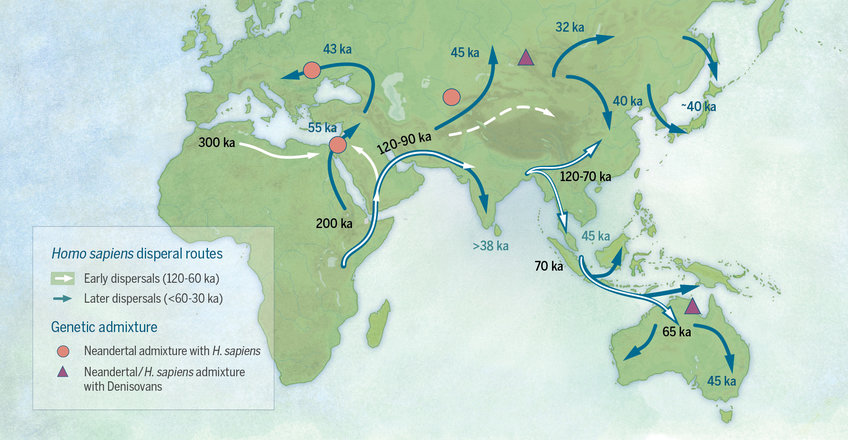Department of Archaeology featured in Germany’s prestigious GEO Magazine
Dr. Patrick Roberts and Prof. Michael Petraglia of the Department of Archaeology, Max Planck Institute for the Science of Human History feature in this month’s issue of GEO for their work on Homo sapiens’ adaptations and migration routes out of Africa. Their prominent role in the application of novel scientific techniques, in little-studied parts of the globe, has helped to reveal new, more detailed insights into how our species became the last hominin standing on the face of the planet.
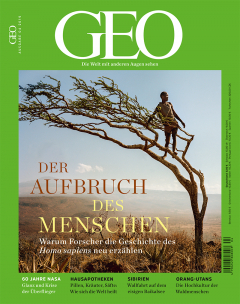
Up until ten years ago, prominent narratives of the migration of Homo sapiens Out of Africa centred on rapid dispersal between 60,000-45,000 years ago focused on the rich protein resources of a coastal ‘highway’. Alternatively, it was suggested that our species relied on climate change to create ‘savannah’ corridors and access to large mammals. In the past decade, however, it has become increasingly clear both that our species left Africa at least as early as 100,000 years ago and that it made use of a variety of environments in the process. Researchers in the Department of Archaeology, Max Planck Institute for the Science of Human History have been a key part of this emerging picture, and their contributions have now been presented in a leading Geography and Archaeology venue for Germany.
Extending the dispersal timeline
Traditionally, Late Pleistocene archaeologists have used similarities in stone tools, mitochondrial genetic information from modern populations, and assumptions of environmental capacities to argue that our species made its first moves “Out of Africa” c. 60,000 years ago. While this dispersal was relatively ‘late’, given Homo sapiens emerged in Africa 300,000-200,000 years ago in Africa, it was ‘rapid’ following the Indian Ocean coastline thanks to reliable marine protein. This enabled movement from Africa all the way to Australia within, at most, 10,000 years. “This has been the traditional model for a long time in archaeology and palaeoanthropology,” says Prof. Michael Petraglia.
“However, our recent archaeological work in India and Saudi Arabia, alongside other research in Southeast Asia, has indicated that Homo sapiens left Africa much earlier than often assumed,” he continues. Discoveries of new fossils, new estimations from ancient DNA research, and more refined studies of stone tool variation have all implied that our species left Africa c. 100,000-80,000 years to expand into the Middle East and potentially as far as Southeast Asia. This not only suggests an earlier ‘wanderlust’ in human populations, but also opens up increasing time-depths over which our species interacted with other hominins in different parts of Eurasia.
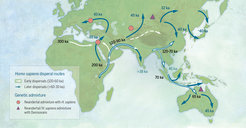
Closer and closer relatives
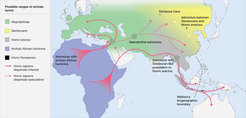
The GEO article also features the work of Dr. Matthias Meyer of the Max Planck Institute for Evolutionary Anthropology, Leipzig. He has been a key part of developing ancient DNA methods that have revealed growing evidence for inter-breeding between Homo sapiens, Homo neanderthalensis, and the more mysterious ‘Denisovan’ hominins. This has completely blown open previous assumptions of biological and cultural distance of our species from its closest evolutionary cousins.
“While much work remains to be done, these exciting new datasets are highlighting that Homo sapiens did not simply rapidly or aggressively replace its hominin forbears in different parts of the world,” says Prof. Petraglia. “Instead, it clearly closely interacted with these other hominin groups over significant periods of time.” What then caused these hominins to disappear? Why was our species able to extend its range over a much wider area than these other species? And what are the unique factors that make us human?
Adapted to variability – the human story
It is here where GEO Magazine notes Dr. Patrick Roberts’ contributions to defining the adaptive capacities of our species. “Investigations into what it means to be human have often attempted to uncover the earliest material traces of ‘art’, ‘language’, or technological ‘complexity’,” he says. “However, our team has been arguing that it is perhaps more profitable to test whether our species also demonstrated an ecological uniqueness relative to its closest relatives.” Over the past 5 years, Dr. Roberts has applied biogeochemical approaches, such as stable isotope analysis, to fossil human tooth enamel to demonstrate that Homo sapiens made use of a variety of more ‘extreme’ environments, such as tropical rainforests, when compared to other hominins.
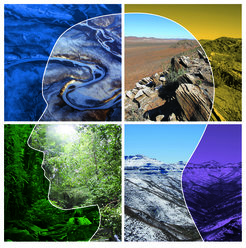
Our species is ecologically unique in its ability to occupy, and specialize in, a variety of different environments as it began to colonize the entire planet between approximately 300 and 60 thousand years ago.
“In contrast to our ancestors and contemporary relatives, our species not only colonized a diversity of challenging environments, including deserts, tropical rainforests, high altitude settings, and the palaeoarctic, but also specialized in its adaptation to some of these extremes,” says Roberts. Meanwhile, the majority of evidence suggests that other members of the genus Homo were reliant on grassland and woodland mosaics. “An ecological perspective on the origins and nature of our species potentially illuminates the unique path of Homo sapiens as it rapidly came to dominate the Earth’s diverse continents and environments,” concludes Roberts.
The latest GEO Magazine article highlights the important role researchers within the Max Planck Society continue to play in understanding what it means to be human, as well as the timing of our species’ global colonization. Work continues in order to find the earliest fossils of our species in different regions of the world, including within the evolutionary heartland of Africa as well as beyond it. Furthermore, new scientific approaches are providing the possibility of determining the adaptations needed by different hominin populations as they encountered new plants, animals, and climates on their journey to a pan-continental existence.
The online link to the GEO Magazine article can be found here:
https://www.geo.de/magazine/geo-magazin/34878-geo-nr-04-2019-der-aufbruch-des-menschen

